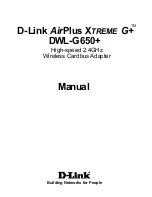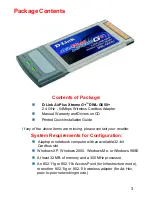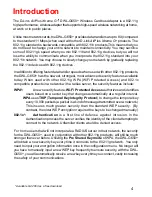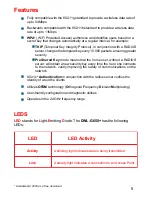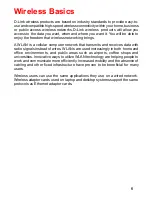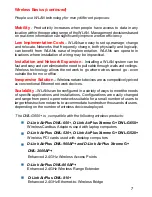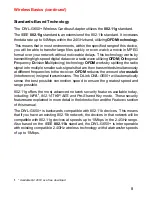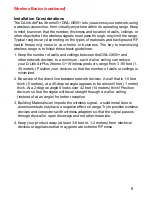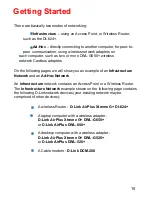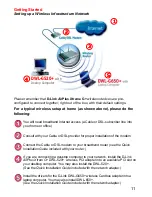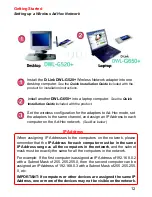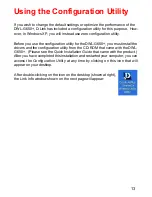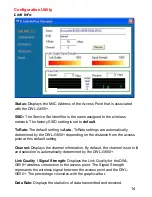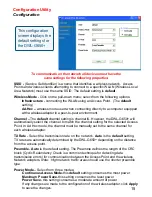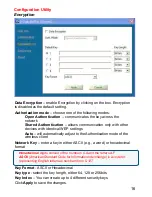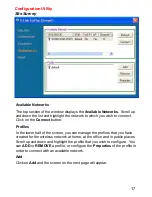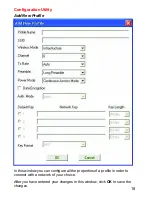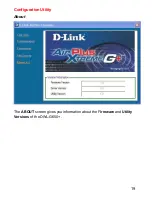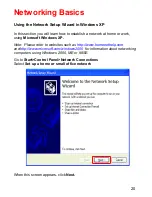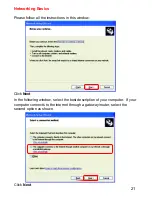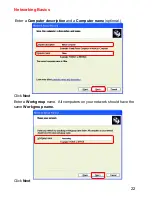
7
Wireless Basics
(continued)
People use WLAN technology for many different purposes:
Mobility
- Productivity increases when people have access to data in any
location within the operating range of the WLAN. Management decisions based
on real-time information can significantly improve worker efficiency.
Low Implementation Costs
– WLANs are easy to set up, manage, change
and relocate. Networks that frequently change, both physically and logically,
can benefit from WLANs ease of implementation. WLANs can operate in
locations where installation of wiring may be impractical.
Installation and Network Expansion
- Installing a WLAN system can be
fast and easy and can eliminate the need to pull cable through walls and ceilings.
Wireless technology allows the network to go where wires cannot go - even
outside the home or office.
Inexpensive Solution
– Wireless network devices are as competitively priced
as conventional Ethernet network devices.
Scalability
– WLANs can be configured in a variety of ways to meet the needs
of specific applications and installations. Configurations are easily changed
and range from peer-to-peer networks suitable for a small number of users to
larger infrastructure networks to accommodate hundreds or thousands of users,
depending on the number of wireless devices deployed.
D-Link Air
Plus
DWL-800AP+
Enhanced 2.4GHz Wireless Range Extender
The DWL-G650+ is compatible with the following wireless products
:
D-Link Air
Plus
DWL-650
+,
D-Link Air
Plus
Xtreme G+ DWL-G650+
Wireless Cardbus Adapters used with laptop computers
D-Link Air
Plus
DWL-520+, D-Link Air
Plus
Xtreme G+ DWL-G520+
Wireless PCI cards used with desktop computers
D-Link Air
Plus
DWL-900AP+ and D-Link AirPlus
Xtreme G+
DWL-
Enhanced 2.4GHz Wireless Access Points
D-Link Air
Plus
DWL-810+
Enhanced 2.4GHz Ethernet-to-Wireless Bridge

